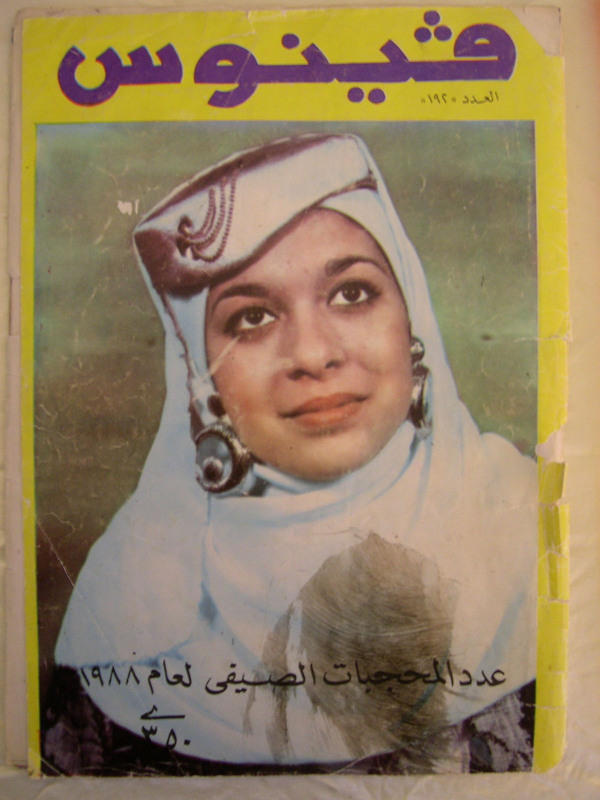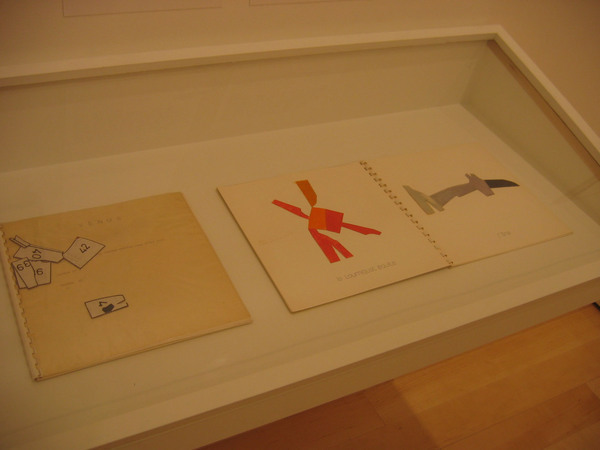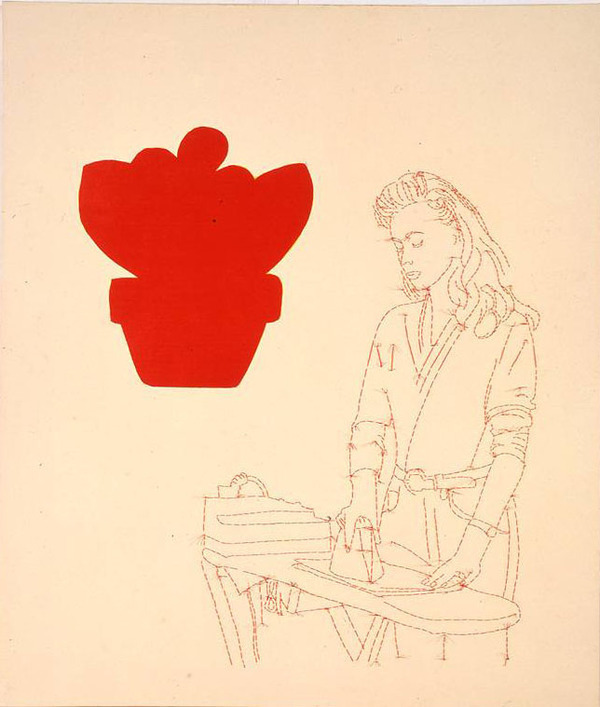Patterns & Models

Venus, no. 192 (August 1988). “Numero special femmes voiles pour l’été 1988” (Special issue for veiled women, summer 1988). Collection of the artist
While living in Cairo in 1988, Ghada Amer had an artistic breakthrough when she stumbled across a fashion magazine titled, Venus. The artist tells me that this magazine was a “sort of Vogue for the veiled woman,” which featured images of Western models wearing veils and modestly fashionable outfits that were photo-montaged onto their figures. The back of the publication also featured sewing patterns for readers to create their own versions of the fashions seen in the photos. Amer’s immediate response was a series of spiral notebooks with miniaturized versions of these patterns, and soon after larger works emerged, including the title piece for this exhibition, “Love Has No End,” (1990), and “Untitled,” (1990), which features a tracing paper cutout of a miniskirt pattern mounted to a rectangle of plywood.

(Ghada Amer (American, b. Egypt, 1963) Venus n. 192: Numero special femmes voiles pour l’été 1988, modèle n. 3, taille 46 (Venus No. 2: Special Issue for Veiled Women, Summer 1988, Model No. 3, Size 46), 1988; Ghada Amer (American, b. Egypt, 1963) Venus n. 192: Numero special femmes voiles pour l’été 1988, modèle n. 3, taille 46 (Venus No. 2: Special Issue for Veiled Women, Summer 1988, Model No. 32, Size 46), 1988. Both spiral notebooks with collage elements: Bristol paper on Canson paper. Collection of the artist, courtesy of Gagosian Gallery)
This piece leads into an area of Amer’s work where she begins to explore connections between presumed “feminine” techniques or craft, and “masculine” or formalized constructions. The patterning of baby clothes, and dresses influences works such as “L’Ange (The Angel),” (1991), and “Untitled,” (1991), while the subject of “woman’s work” and the figure of the “bored housewife” infiltrates “La femme qui repasse (The Woman Who Irons),” (1996), as Amer begins to reframe the narratives of feminine domesticity. In the last piece from this section, “Test Piece for Conseils de beauté de mois d’août: Votre corps, vos cheveux, vos ongles et votre peau (Beauty Tips for the Month of August: Your Body, Your Hair, Your Nails, and Your Skin),” (1993), the models of feminine behavior and improbable ideals of beauty that are championed by magazines such as Elle and Vogue are rendered powerless in the folds of four handkerchiefs delicately embroidered with the French text about grooming and proper etiquette.

La femme qui repasse (The Woman Who Irons), 1996. Acrylic and embroidery on canvas. Collection of the artist, courtesy of Gagosian Gallery.
Check out these works and more in Ghada Amer: Love Has No End at the Elizabeth A. Sackler Center gallery through October 19th.

Dr. Maura Reilly is the Founding Curator of the Elizabeth A. Sackler Center for Feminist Art at the Brooklyn Museum, the first museum exhibition space of its kind in the world. Prior to assuming the position as Curator, Reilly taught art history and women's studies at Tufts University, as well as courses at Pratt Institute, Vassar College, and at her alma mater, The Institute of Fine Arts, New York University, where she received her Ph.D. in 2000 in Modern and Contemporary Art with a concentration in feminist and queer theory. Reilly has curated, lectured, and published extensively, both nationally and internationally, and has been a regular contributor to Art in America since 1998. In 2005, in celebration of ArtTable's 25th year Anniversary, she received one of their prestigious Future Women Leadership Awards; and in 2006, she received a Lifetime Achievement in the Visual Arts Award from the Women's Caucus for Art. She is an active member of the National Organization for Women, International Association of Art Critics, ArtTable, and is on the National Committee of The Feminist Art Project. Most recently, Reilly curated, Ghada Amer: Love Has No End,, and co-curated with Linda Nochlin, a major exhibition of international contemporary feminist art, titled Global Feminisms, which inaugurates the Brooklyn Museum's new Center for Feminist Art in March of 2007. Reilly is the author of a monograph on Ghada Amer (New York: Gregory R. Miller & Co., 2007).
